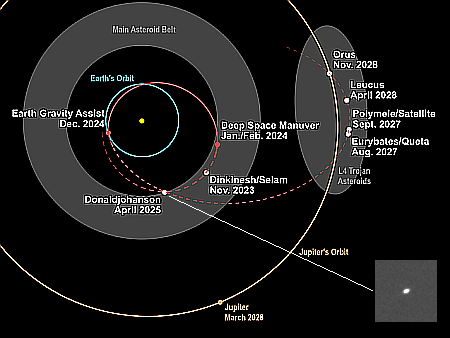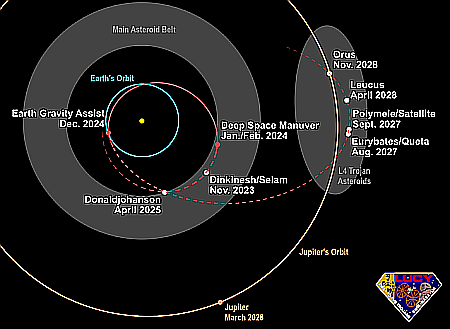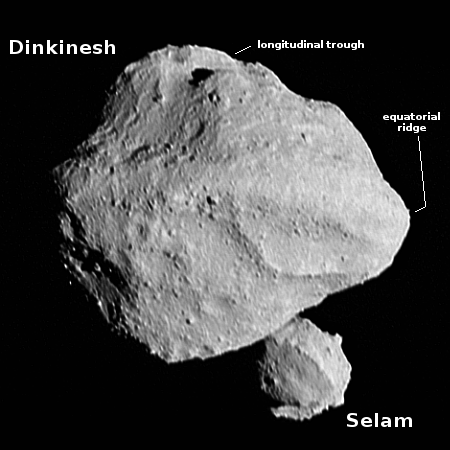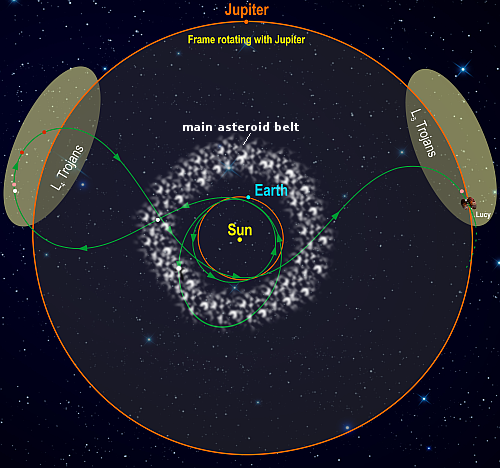Lucy takes first picture of its next target asteroid

Lucy’s route to the asteroids. Click for original blink animation.
The asteroid probe Lucy, on its way to the orbit of Jupiter to study numerous Trojan asteroids, has taken its first picture of the the main asteroid belt asteroid Donaldjohanson, which it will pass within 600 miles on April 20, 2025.
The map to the right shows the spacecraft’s looping route to get to the Trojans, with that image of Donaldjohanson in the lower right. Though the asteroid is about two miles side, it will remain an unresolved point of light until the day of the fly-by. This image was taken from a distance of 45 million miles. As for the asteroid’s name:
Asteroid Donaldjohanson is named for anthropologist Donald Johanson, who discovered the fossilized skeleton — called “Lucy” — of a human ancestor. NASA’s Lucy mission is named for the fossil.
After this encounter, Lucy will head to the Trojans, where it will visit its first six asteroids (including two binaries) in 2027-2028.

Lucy’s route to the asteroids. Click for original blink animation.
The asteroid probe Lucy, on its way to the orbit of Jupiter to study numerous Trojan asteroids, has taken its first picture of the the main asteroid belt asteroid Donaldjohanson, which it will pass within 600 miles on April 20, 2025.
The map to the right shows the spacecraft’s looping route to get to the Trojans, with that image of Donaldjohanson in the lower right. Though the asteroid is about two miles side, it will remain an unresolved point of light until the day of the fly-by. This image was taken from a distance of 45 million miles. As for the asteroid’s name:
Asteroid Donaldjohanson is named for anthropologist Donald Johanson, who discovered the fossilized skeleton — called “Lucy” — of a human ancestor. NASA’s Lucy mission is named for the fossil.
After this encounter, Lucy will head to the Trojans, where it will visit its first six asteroids (including two binaries) in 2027-2028.





